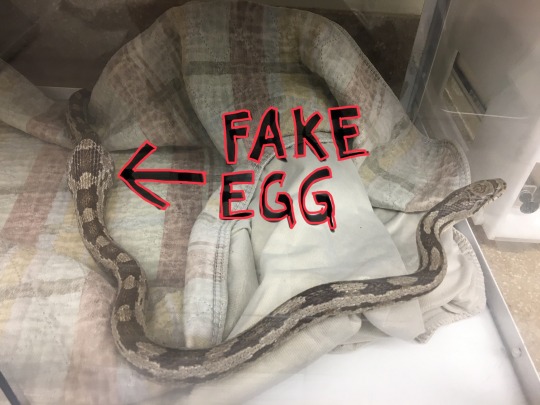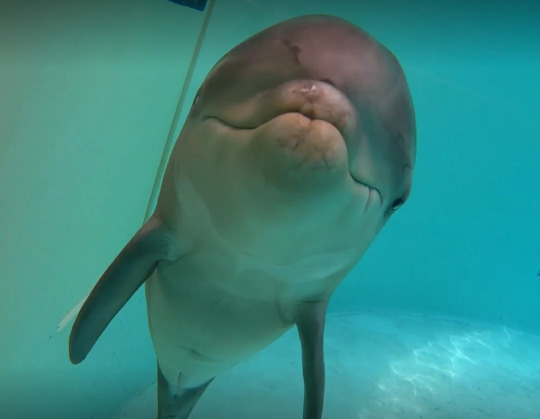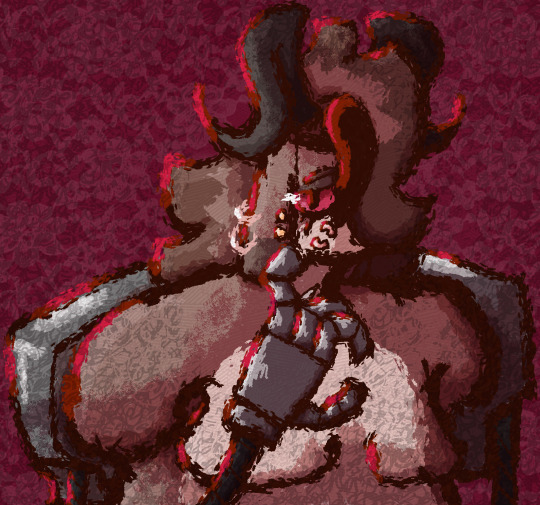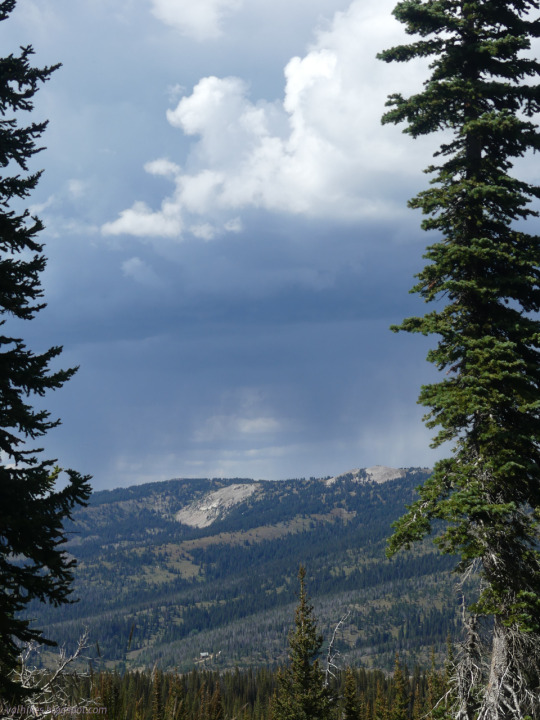#wildlife medicine
Text
This is a gentle reminder to those who keep poultry to PLEASE keep in mind wild snakes if you are using fake eggs in your chicken coop. Snakes are incapable of digesting the wooden/plastic/ceramic fake eggs that are commonly placed in chicken coops to train hens. Snakes (like this little ratsnake here) can and often do eat these fake eggs and suffer life-threatening obstruction as a result!

If you need to use fake eggs in your coop please strive to ensure that the enclosure is snake-proof (difficult) or superglue 3 or more eggs together so that snakes cannot consume them and become obstructed.
#snakes#wildlife#animals#vetblr#veterinary medicine#reptiles#wildlife medicine#nature#herpetology#herpblr#chickens#hens
39K notes
·
View notes
Text
So some good news for any snake enthusiasts out there: they found a second wild Eastern Indigo Snake in the state of Alabama! The first was found in 2020 and was the only one seen in the state in 60 years! This was a few months ago at this point, but I have a special love for these guys and had the pleasure of speaking with a vet who’s part of their reintroduction program so I was motivated to finally getting around to making this post.
For anyone who doesn’t know, the Eastern Indigo Snake is the longest native snake in North America and has sadly been listed as a ‘threatened’ species for decades now. But! As I said above, there has been some pretty good news over the past few years thanks to the Eastern Indigo Project, which is a great example of zoos, wildlife organizations, and universities working together to re-introduce a native species back into a region it was thought to be extinct in. Thanks to over a decade of captive breeding and selective releasing of snakes into designated wildlife areas, it looks like Eastern Indigo snakes might have a real chance at making a comeback in Alabama!

https://www.cnn.com/2022/03/20/us/rare-snake-alabama-trnd/index.html
21 notes
·
View notes
Text
Okay, I know people as a general rule tend to not care about invertebrates as much as cute, fuzzy mammals, but this is a must-read if you care about animal welfare. The short version is that horseshoe crab blood has been used for decades in medicine as a way to test whether something is truly sterile; the blood clots in the presence of bacteria. Since then millions of horseshoe crabs have been captured and drained of blood, even though a synthetic alternative was developed a few years ago.
They go through a pretty brutal experience in the process. They're caught by fishermen who often throw them by their tails into a pile in the open air, and they're then trucked to a bleeding facility where they're strapped down and their blood is removed with needles jabbed directly into their hearts. Over half their blood may be taken, after which they're supposed to be returned to the ocean. However, it's likely many of them never make it back, instead turned into fish bait and sold by the same fishermen who caught them in the first place.
Apart from the fact that this is a horrific thing to put any animal through, the attrition due to fatalities has put a serious dent in horseshoe crab numbers. This is compounded by massive habitat loss, pollution, and the capture of horseshoe crabs as food, particularly as the females of one species are considered a delicacy. And other animals that rely on horseshoe crabs are suffering, too. The American rufa subspecies of the red knot, a medium-sized shorebird, is critically endangered as the horseshoe crab eggs it must have in order to successfully complete migration have become increasingly scarce, and it is likely the bird will become extinct if trends continue.
While there are guidelines for medical horseshoe crab harvest, they're considered optional. The few laws that exist are poorly enforced. Short of a complete ban on horseshoe crab blood in favor of the synthetic alternative, these animals are in very real danger of going extinct after a history spanning over 400 million years on this planet.
Thankfully, this article is not the first to bring forth the issues surrounding horseshoe crab harvest. Here are a few resources for further information and action (US based, though horseshoe crabs are threatened throughout their entire range):
Horseshoe Crab Conservation Network - https://horseshoecrab.org/conservation/
Wetlands Institute - https://wetlandsinstitute.org/conservation/horseshoe-crab-conservation/
Horseshoe Crab Recovery Coalition - https://hscrabrecovery.org/
#animal welfare#animal cruelty#cw animal cruelty#animal suffering#horseshoe crabs#invertebrates#wildlife#animals#environment#conservation#endangered species#extinction#nature#medicine#science#scicomm#science communication
8K notes
·
View notes
Text
Blue Heron hunting
Source Me laf@ilyF ❤️
#original photographers#colors#artists on tumblr#oklahoma#my photos#my escape#my photgraphy#nature#photographers on tumblr#blue heron#hunting#birds#wildlife#medicine creek#my video#movement#music
28 notes
·
View notes
Text




I suppose if any wildflower can be said to embody the bounty and energy of summer, it must be black cohosh (Cimicifuga racemosa, or Actaea racemosa). Anyone who has grown up in Central Appalachia will instantly recognize and connect with the towering "fairy candles" of this woods-dwelling perennial in the buttercup family - some might even suggest a spiritual bond exists between the people of the mountains and the plant. This isn't surprising - black cohosh has a long and storied history as a medicinal herb, dating back to the Native American tribes, who used an extract from its root to treat everything from musculoskeletal pain to snake bites, and continuing with the European settlers, who used it to treat the symptoms of menopause. While there is little evidence from clinical trials indicating the plant's efficacy in treating menopausal symptoms, higher quality studies are being urged and may yet prove the plant's value in supporting female reproductive health. Irrespective of its potential contributions to medicine, black cohosh is the living spirit of Appalachia's summer woods, and one of the most spectacular wildflowers of North America.
#appalachia#vandalia#west virginia#wildflowers#flora#summer#favorite summer wildflowers#traditional medicine#herbal medicine#herbal remedies#black cohosh#fairy candles#black bugbane#black snakeroot#snake hill wildlife management area#cheat river canyon
137 notes
·
View notes
Text
Snoozing all day long! 😴
As we all shut down and prepare ourselves for our afternoon naps, take a moment and watch how our resident animals are celebrating World Sleep Day (15 March 2024) by cozying up in their enclosures.
—
World Sleep Day is an awareness activity of World Sleep Society, founded by World Association of Sleep Medicine (WASM) and World Sleep Federation (WSF).
#Wildlife SOS#World Sleep Day 2024#wildlife conservation#rescued animals#World Sleep Day#save animals#protect wildlife#World Sleep Society#World Association of Sleep Medicine (WASM)#World Sleep Federation (WSF)#sleep#nap#snooze
11 notes
·
View notes
Text
I've been seeing way too many "heartwarming" videos of people rescuing injured wild animals and taking care of them, but I need people to understand that you should NOT do that. I don't mean just leave the animal there, but you shouldn't bring it in to your home thinking you can rehabilitate it by yourself or keep it as a pet.
Instead, you should take the animal to the nearest wildlife rehabilitation center. Those centers have vets and staff who are experienced in treating wildlife and who have the correct materials to heal the animal and let them back into the wild. The average person just does not have the materials or knowledge to keep the animal alive or heal it. I get that you will want to do the right thing, and you may think you are prepared, and it feels good to personally help an animal, but in truth the right thing to do is give them to a proffessional who has a better chance of keeping that animal alive than you do.
There is also the fact that animals can carry diseases which can pass to humans and other animals. Bringing a wild animal into your home (and especially one which is injured and could be ill) is a risk to you, your family, and any existing pets. If you are going to take an animal to a rehabilitation center, you might want to call them first and ask how to protect yourself while retrieving the animal (or they might send someone to your location to do it for you). If you cannot contact them right away, make sure you are completely covered, including gloves. Also be sure you know how to correctly handle the animal in question (bunnies, if handled incorrectly, can break their bones while trying to kick you away). There is still a chance you will get bitten or scratched, which puts you at risk for serious diseases like rabies and rat bite fever.
NEVER rescue an animal from a predator. This puts you at risk of injury and also deprives the predator of much-needed food. It can be really sad to see an animal eat another, but that is how nature works and they all need to eat somehow. Taking a squirrel away from a hawk, for example, means the hawk now does not have food to feed itself or potential offspring, and it can starve. Let nature take its course.
It is different for stray cats and dogs, in which case you should call animal control, which will bring the stray to a shelter where they can be healed, neutered/spayed (to prevent more strays) and then either released back where it came from or put into adoptions. Some shelters will contact you if the stray is put into adoptions so you can get a choice hold.
#psa#animals#animal shelter#wildlife#wildlife rehab#wildlife rescue#animal video#veterinary#veterinary medicine#vet med#vet#cute animal#cute animals#pets#petblr#vetblr
47 notes
·
View notes
Text

From sito web
#kitchen witch#witch#witches#witchcraft#grimorium verum#grimoire#green witch#green magic#plant magic#magic plants#plants and herbs#herboristerie#herbarium#medicinal herbs#herbs for empath#herbs#herbal witch#wildlife
10 notes
·
View notes
Text
Okay time for another PSA to not let your pet cats free roam outdoors ever. (If you think you don't have the space indoors for a cat to be happy or the willingness to give your cat what it needs indoors then don't have a cat. That means you can't take care of it so don't get it. Also, you clearly don't care about a cat's "natural needs" if you don't also keep it fully up to date on health check ups/vaccinations, give it enrichment and feed it only pure raw meat at home. They're obligate carnivores. Kibble is why they develop and die of kidney issues.)
They indisputably cause incredible damage to ecosystems and due to the way they became domesticated to eradicate pests, they are built to kill and maim indiscriminately and with extreme prejudice. Your pet cat does not hunt to eat when it has a safe bed and food at home. It hunts to slaughter. Because it's instincts say so, even if you think it's a chill lazy cat (what are the feather and mouse toys for but to satisfy those instincts?).
Whether or not a direct attack kills a small animal, it will most certainly still die of complications (like ruptured air sacs in birds -an incredibly painful way to go-, blood loss, disability, necrosis, cellulitis, and septicemia), countless serious infections from the cat's claws and mouth, inhalation of blood/stomach contents, or other infection from exposure to the environment. That is if it totters along on its will to survive, suffering, and manages to escape the next predator that comes along.
And if you couldn't care less about the local ecosystem and countless species that have gone extinct by cats under our very noses, you should worry about your cats' safety and the possibility of infection and parasites that they bring home to you and transmit to other pets, people, and homes they visit.
Cats will be run over or killed/injured by people, either by accident or intentionally (many people see any kind of small animal as target practice for their car or dart gun or whatever else and don't care if it's a cat. Maybe they even do it to protect their livestock, e.g. chickens, rabbits). Cats will get into fights with other animals. Cats will get eaten by coyotes. Cats will hide or shrug off injuries. Cats will meet other cats from different circumstances. Cats will carry rabies or be bitten by a vector animal and the only way to test for rabies is to take a slice of the brain (i.e., kill the animal in question). Cats will walk back into your yard and home with everything they picked up along the way, if not on their body then in their mouths after grooming and in their litterbox. Putting your cat, yourself, and others in that sort of danger is more neglectful than keeping them indoors. Letting them bring everything back to your home is negligent. Letting them infect and harm other animals is negligent ("dangerous" dogs who stay in their own yards get euthanized for less). It does not matter what part of the world you live in. Letting your pet cat outdoors is neglect and malicious behavior.
And in case you think you're not at risk from disease from your own cat or you want relevant, recent news to back this up, here's an article X , posted 07 August 2023, about a UK man contracting a completely unknown bacterium from a stray cat, initially resistant to certain antibiotics, that started to kill the infected flesh, and here's the scientific study about identifying the bacteria X
Who knows what your own cat gets up to outside or what other animals they meet?
#outdoor cats#biology#science#wildlife conservation#medicine#veterinary medicine#if this post gets views i just know im still gonna get hate cuz wow this topic shouldnt be this controversial#i had this whole post drafted and went looking for studies to cite and that article came up before i even hit the search bar#this has been a psa#this also is not to say that people who did this in the past are evil or anything. there is a difference between not knowing better and#making a choice or choosing to ignore new information rather than learning#or having info delivered to you in a way that didnt tell you what was wrong about it
14 notes
·
View notes
Text
Anyone who works with wildlife will tell you it’s a good thing for wild patients to show hostility towards humans even after a long stay in the hospital, and honestly I think snapping turtles might be the best at this. We surgically repaired this little dude’s broken mandible and provided care in hospital for a few months but bless his heart he never stopped hating my fucking guts. Even with a broken jaw he’d snap at me so viciously whenever I had to give him meds and I love him like a son


This feisty creature’s implant was removed once he’d healed and he was successfully released back into the wild near where he was found. Good luck out there bud, I sincerely hope every wildlife patient I ever see going forward has your disdain for humans!
(These photos were taken while the patient’s enclosure was being cleaned, and he was never handled without medical or husbandry cause)
#animals#wildlife#snapping turtle#chelydra#turtles#chelonian#vetblr#wildlife medicine#zoology#nature#biology#veterinary medicine#testudines#funny#reptiles#reptiblr#herpetology#herpblr#my sweet boy#speedy- not named by me
14K notes
·
View notes
Photo



[Images Description: Photographs of a fungus specimen on a log showing the underside and overside of the inverted dish-like structures. The overside is white and fuzzy, and the underside shows split pale orange gills that radiate from the centre of the round dish. End ID.]
The Splitgill Mushroom (Schizophyllum commune) is one species of filamentous basidiomycete that has been identified as a human pathogen with 114 cases of allergic or respiratory disease in humans. It is the common agent responsible in known basidiomycete infections worldwide. (Information Source: Medical Mycology)
It is a beautiful fungus. I interacted with it for this photograph and had no ill effect to myself. One must respect and understand their subjects to safely admire the beauty of nature!
#nature#mycology#biology#ecology#fungi#killy killy#Kestrels Observation#nature photography#wildlife#wildlife photography#mushroom#mushrooms#fungus#science#medicine#hiking#forest
110 notes
·
View notes
Text

A happy ending for the orphaned dolphin calf rescued from Clearwater, Florida in July 2022 after becoming entangled in a crab trap. He will remain permanently in the care of SeaWorld Orlando, the facility responsible for his rehabilitation, due to their extensive experience in rearing dophin calves. The as-of-yet unnamed little male will join the social group in the park's Dolphin Nursery habitat, where he will have the care and companionship of other calves and experienced mothers. SeaWorld is asking the public to vote on a name!
#I chose ridgway of course#after the late great dr sam ridgway#father of marine mammal medicine#dolphins#dolphin#bottlenose dolphin#dolphin calf#baby dolphin#dolphin rescue#animal rescue#wildlife rescue#wildlife rehab#seaworld#seaworld orlando#seaworld cares#zoos#aquariums#support zoos and aquariums
63 notes
·
View notes
Text
Blue Heron Fishing...
Source Me laf@ilyF ❤️
#original photographers#colors#artists on tumblr#oklahoma#my photos#my escape#my photgraphy#nature#photographers on tumblr#medicine creek#blue heron#fishing#Fall#Oct 2023#wildlife photography#my video
12 notes
·
View notes
Text
I'm extra sad tonight. I know exactly why but I don't want to acknowledge it.
I came off my shift today and both my legs were in so much pain I waddled out. I had my mother drive me home because the fatigue was crushing. Currently, I'm working somewhere I absolutely love and don't want to leave, but dammit animal care is too taxing on my body.
I try to be clear of my limits but I don't even know my limits yet. It makes me nervous about summer research and graduate school.
Like, I really really tried to make the path towards a veterinarian work but it was clear to me in every clinic I assisted in (zoo, equine, small animal) that I wouldn't be accommodated properly due to understaffing*. I tried to make the path for a zookeeper or aquarist work but I fear it's too physically taxing on me now. I'm currently trying to make pure, hard research work but it's difficult when you don't have the academic connections needed to research vet med.
By all honesty I just want to know everything that's wrong with my body and if there's a way to manage it. Because I feel like I can be all I want to be once I get the pain and fatigue under control. Whether that's fully pursuing my PhD/DVM or something else. It's driving me crazy that I know there's at least something else in some other bodily system that my current meds aren't taking care of, but I don't even know where to start.
* Understaffing isn't the fault of the veterinarians or even the specific clinics but rather the field of veterinary medicine as a whole. It's a concerning trend that I don't think will get better in 5-7 years if I went to veterinary school right and planned to graduate in that time
#tw rant#or maybe a dump#it's either the imposter syndrome tonight or something else#the potential PI i talked to tried to talk me out of marine wildlife#and into marine conservation policy#so many scientists and vets have told me go policy instead of research or medicine#i cannot stress how much I don't want to deal with politicians for my job#ow..
3 notes
·
View notes
Text

Glory my bestie Glory
#keese draws#eternal gales#oc posting#oc#ocs#oc art#man it been Forever since I’ve last drawn her which is a shame she’s rly fun to draw#actually. idk if I’ve ever posted any art of her before? I’ve vaguely talked abt her but idk#but ya she’s one of the historical figures from my semi prequel story#I say semi cause it doesn’t rly directly relate to the main story of eternal gales just worldbuilding shit#but ya I love glory sm she’s just hanging out#she lives out in the marshes that surround the main cities#shes a chemist that has done a lot of work for underground medical communities#she also loves to study the wildlife of the marshes and even has tamed a few#it’s actually because of this that she’s still alive tbh#the animals themselves aren’t even That dangerous but since most living staliens in this society have never seen other animals in their#lives they are all incredibly unwilling to take the risk to take out someone who only lives on the edge of society anyways#she has done a Lot of rebel work in her time even before she got into medicine#for example she did a lot to contribute to the big movement towards individuality at the time#one big thing she did at the time though that was especially controversial was chose her own pronouns#an act that was only made more controversial by her choosing one that suggests power and high status#this combined with her long mane and low status as a food packager made her a big target of harassment even within activist communities#this is in fact why she moved out so far in the first place#she finds animals to be much better company in general and can’t deny being bitter towards the hypocrisy of some of her peers#but despite this she still wants society to move in a better direction so as she learns more and more she continues to share said knowledge#that’s what brought beetle and bugs to her door in the first place
4 notes
·
View notes
Text









Medicine Bow National Forest, Wyoming.
There was a bit more rain than I expected for the 4th day hiking back from the state line on the CDT, but I found a window in the weather for a great diversion up Red Mountain. Also, there was some great wildlife.
#hiking#backpacking#trekking#Medicine Bow National Forest#Huston Park Wilderness#nature#landscape#travel#hike#outside#mountains#peak bagging#peakbagger#wildlife#CDT#Continental Divide Trail#coyote#deer#squirrel
13 notes
·
View notes